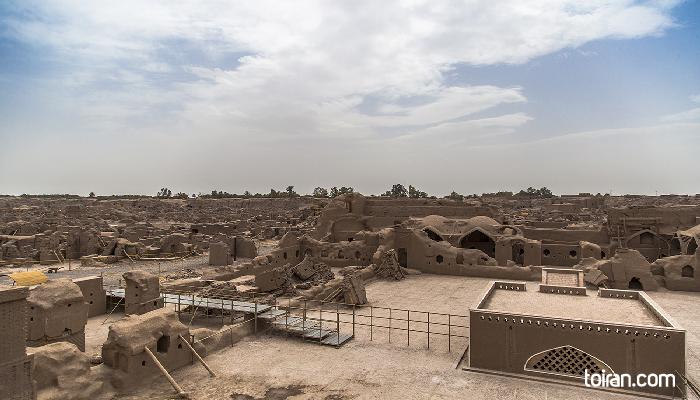Bam Citadel was the largest adobe structure in the world prior to the 2003 earthquake that devastated nearly 80 percent of this fortress city. Following the earthquake, a multinational effort was launched by several countries including Japan, Italy, and France to aid in the reconstruction project to restore this historic citadel.
The citadel, which spans an area of nearly 200 square meters, was constructed during the Achaemenid era (550-330 BC) and was inhabited for nearly 20 centuries before it was abandoned during the Qajar era (1785-1925) in 1850. The inhabitants of this citadel were farmers and wove carpets as a means of generating income.
Bam Citadel includes a military section and a civilian section. The military section of the citadel includes a deep 40-meter water well, a stable with the capacity of 200 horses and barracks.
The civilian part of the citadel includes a Grand Mosque, Small Mosque, caravanserai, zoorkhaneh (an arena where champions practiced the traditional Pahlevani sport), windmill, prison, main water well, governor’s palace, school , bakeries, gates, watchtowers and a bazaar. The adobe shelves in the shops of this bazaar indicate that it was a thriving marketplace in the past.
There are three kinds of homes in the Bam Citadel: ones with 2 to 3 rooms for the poor, ones with 3 to 4 rooms for the middle class and ones with more than four rooms and wings suitable for use during the different seasons of the year. As a means of air-conditioning homes had modest or lavish wind towers.
The governor’s palace sits on a high hill at the heart of the citadel and has been built in five stories. Some of the homes in the citadel have been built in two stories. Some of the homes have private baths and stables attached to the main living quarters. Homes all had water wells that provided drinking water for their residents.
Bam Citadel was surrounded by a series of deep moats as a defense mechanism against enemy attacks. There was no means of entering the citadel once its gates were closed and when the fortress city came under siege its inhabitants could survive for long periods without running out of food and water as they had gardens, domestic animals and water wells.
Throughout its history the citadel sustained damages in a number of attacks and wars, and as a result was reconstructed several times.
The citadel is part of ‘Bam and its Cultural Landscape’ which was registered as a World Heritage Site by UNESCO.





